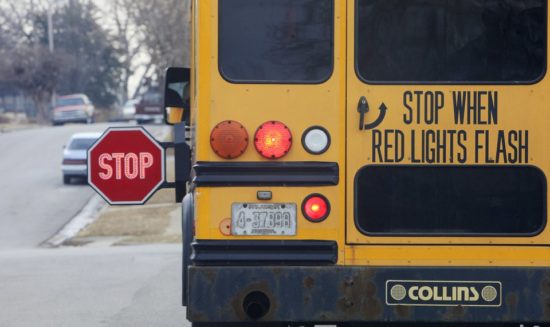School has not worked for our son, D.
Don’t get me wrong, our family has found many adults at his schools who love him and are committed to educating him, but they – and he – need to work extra hard. They work much harder than those for whom school was designed – and that does not include D – a brilliant and strong, young black, male child who we recently adopted out of the foster care system where he has had a history with trauma.
Our experience is similar to those of many, many… many others. Schools and school systems have repeatedly proven that they were designed to provide the best education to some while preparing many others to serve those few who are intended to maintain power and privilege. I also have learned to trust the predictability of demographics – in other words, without intentional interruption, a child’s demographics serve as reliable predictors for the quality of education and/or the intensity of barriers provided to students. Our pandemic crisis only has both crystalized and intensified my learning – pushing me to a radical opinion: we need to stop schooling our children.
When our district first closed schools, my husband and I made a calculated risk to create a schedule for D that strove to replicate much of the schedule and many of the daily rituals within school. We decided on this course of action even though school has not worked for D because our district had closed schools only for two weeks and we felt it was important to maintain some resemblance to the school structure to which he might soon be transitioning back. Those two weeks were painful.
As career educators, my husband and I were embarrassed by the mistakes we seemed to believe were necessary to remake:
- Even though we knew his process for learning was not supported by precisely timed and pressurized increments for engaging in and finishing work (part of his trauma manifests in the equating his own safety with the need to not make mistakes), we replicated a rigid schedule of moving stoically between activities with work completion (and rewards) attached to end times.
- Even though D is a social learner, we faced a logistical challenge of his being an only child and trying to support his learning space while simultaneously participating in our own work tasks and challenges.
- Our son is a deep critical thinker; we saw and agreed that much of the emergency lessons being provided seemed more like busy work than curriculum to which he could make meaningful connections.
- Even though our schools had little choice, unfolding new technology before there was deep understanding and experience with it was fraught with challenges as students were expected to refrain (sometimes to the point of consequences) from engaging with many of the bells and whistles that they actually knew more about).
- In the process of trying to school in a new platform, the aura of unfairness was exacerbated between the spoken high expectations for students and the actual leniency of accountability.
- Perhaps most importantly though, we were trying to maintain ineffective-at-best design at a time when each-and-every student also was going through their own meaning making bout what the hell was happening around them. For an 8-year old child who has experienced great loss, this was the challenge that sat most seriously with our family…again, and for so many more.
After the initial two weeks, our school district extended the stay at home order for another two weeks. This time however, the uncertainty of the timeline for returning to school changed on minds and direction. We decided to stop schooling and focus on educating. We have a meeting with D’s teacher and asked a couple of key questions:
- At the time of this initial stay-at-home order, where were students academically? What could they have been expected to know, do, and be as a result of the year to date? What of the annual outcomes have they been provided enough instruction and practice to be expected to have mastered?
- Given the probability that many students would be denied equal conditions and access to education, was there yet an assurance once conditions and access were assured, students would be held accountable only to that which was covered before the shelter in place orders? For example, if students returned to their physical schools in September, would fourth-graders’ curriculum begin with second semester of their third-grade curriculum – or would it be expected that enough instruction was provided to all students to reasonably expect all students to have progressed?
We did not get answers to these questions, but rather we got answer to the expectations of structure – of school. We were told that D was expected to do schoolwork for about 4-4½ hours a day. Later in that same week, the teachers’ union finalized a COVID-19 agreement in which teachers were expected to work 4 hours a day and during that time, no pre-set schedule could be required – nor could it be required that their time had to include live interaction with students. I support the negotiated agreement for teachers, yet I don’t understand the incongruence behind the thinking for educators and their families as compared to the thinking for students and theirs.
Given the responsibility on families to carry so much of the schooling plan for students, where is their union. Who is negotiating on their behalf? How is their voice leveraged?
It seems to me that after years of evolving from commitments of equality to visions and struggles for equity, we are slipping back to a conflation of understanding. Understandably in this unprecedented situation, schools and districts must first ensure equal access: Does every student have a computer? Does every family have WIFI?
Without a vision for equitable outcomes however, we may rest our laurels on numbers of students who have or have been provided opportunity to have either. Without a commitment to equity, we reproduce the structures of school that have us asking “what did we do” rather than what did we achieve?
School has not worked for D. Reproducing school – or designing a new school based on reproduced, white supremacy culture mindsets embedded in…
- the urgency to show we are doing something done, rather than to getting our intended results,
- the idea of one right way, or at best either-or thinking, for designing school by adapting technology but not interrogating and interrupting biased design and mindsets,
- the persistence of individualism even at a time when social distancing is causing emotional harm to our communities,
- the political power hoarding and fear of open conflict that continues play out for adults in their negotiations at the expense of our young people,
- and the notion of quantity over quality in assuming there will any resemblance of curricular coverage during this time versus sitting in the here and now to prioritize healing and well-being.
So, if the first month-plus of shelter-in-place has taught me something, it is that even those who espouse and commit to rethinking school may be too confined by their connection to its construct. This is a perfect time to interrogate these connections – to question everything…including the purpose of school itself. This is a perfect time to recommit to education and liberation – and perhaps the first thing to liberate is our connection to the construct and confines of school. As a parent… and educator, a few first steps come to mind:
- As we adopt new platforms and technologies for teaching, maintain a wide-open inquiry for how and when these means remove previous barriers – or create new ones. Sadly, our newness with these technologies may cause further distancing at a time when connection is so desperately desired and needed. As an example, teachers cannot both facilitate lessons and discussions and also monitor chat boxes and engage individually. How might we rethinking teaching to have more adults present (even parent volunteers) to engage more personally with students throughout virtual learning?
- As my original questions suggested, focus on learning outcomes and not tasks. Make these learning outcomes transparent and public for all who are newly involved in students’ learning.
- Do not – do NOT – hold all students accountable for new learning that cannot be assured to be facilitated for all learners. Until our technology – and skill – catch up to our situation, students should be held responsible to have learned what was expected up to the day of the original shelter-in-place order (with some backslide). Once it is clear – for ALL – what was expected of all students at that time, current resources should be used prioritize catching up or maintaining that level of competence/mastery with the majority of resources committed to those who were behind and lesser resources committed to practice or enrichment for those who are ready to move forward.
- Schools should be planning at least as much for how they intend to re-introduce students to school upon return as they should for current lessons. Personally, I believe there should be an additional week of professional development just for healing and reorienting the adults, and similar planning for students – perhaps a retreat, before committing the entire first semester to a heightened integration of academic and social-emotional learning.
- Finally, there is an opportunity to rethink the voices of teachers – all teachers. What would it look like – and what would it take – for school design to truly integrate the voices of families in its design and decisions? A committed effort to be inclusive is deserved – beyond token seats – to those who now are picking up the “other half” of the education work during these times. This is not to say that every – or any – parent knows more about curriculum, pedagogy, assessment, school design, etc. but parents do know what is and is not working for their children.
Perhaps it is time for our communities, in collaboration with our educators, to take back our schools – and focus on education.





